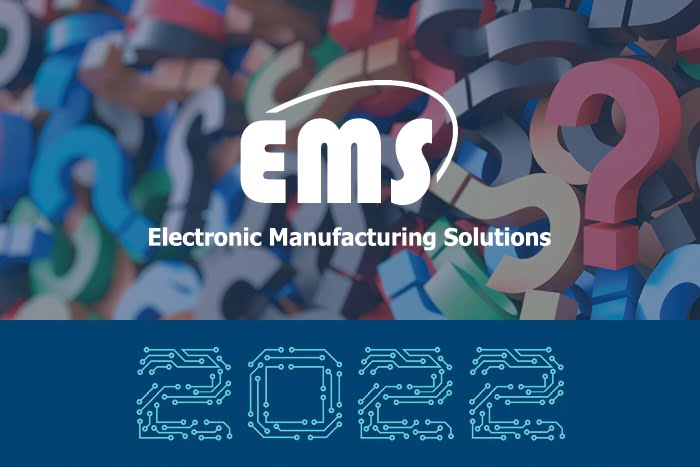In keeping with market predictions, supply chain disruptions continue to plague the electronics manufacturing sector well into 2022.
The war in Ukraine and domestic COVID-19 lockdowns within China have all aggravated the global component shortage, delaying lead times further and causing prices to shoot up. Unsurprisingly, manufacturers offering PCB assembly (PCBA) are feeling the impact of the sparse supply of semiconductors, which, in turn, is affecting the automotive industry significantly.
With so much uncertainty, how can manufacturers manage their customers’ expectations?
Disruptions down the line
The global supply chain for electronics components appears to be taking one step forward and two steps back, with new pandemic-related and geopolitical developments building on the existing pressure. Not only are manufacturers experiencing up to 90-week lead times, but the issues are also causing prices to increase.
Whilst the initial pinch was caused by the outbreak of COVID-19 in March 2020, disaster after disaster has given the supply chain little room to recover.
Just as restrictions around the pandemic began to ease at the start of 2022, Russia declared war on Ukraine. These devastating circumstances have resulted in enormous disruption to oil and gas supplies as authorities clamp down on transport. This lack of fuel is bringing down factories’ efficiencies even further and slowing manufacturing times along the whole supply chain.
What’s more, China is faced with yet more lockdowns as the country experiences another surge of the Omicron variant of COVID-19. Shanghai is under an incredibly strict lockdown to reduce the spread of infection, and the city’s Yantian terminal — the world’s largest container port — is no exception. The lockdowns are slowing international shipping and preventing engineers from working, inhibiting production capabilities and exacerbating the delays.
And last month in March, the Pacific coast of Japan was hit by an earthquake that triggered a tsunami across the coast. Many of the affected semiconductor manufacturers temporarily halted operations and are still in the process of recovering, putting even more strain on the global supply chain and pushing back orders yet again.
Impacting inflation
UK businesses and consumers will undoubtedly be aware of the rising prices across the country, with inflation hitting a 7.4% high. Inflation is, however, taking place globally as a result of shortages across the board.
According to the UK PMI survey, price pressures have spiked due to the increased cost of energy and other commodities, with the cost of materials such as copper and silicon also only going up. Manufacturing firms around the world reported that prices for raw materials are up by nearly 450%, and in February 2022, semiconductor prices were higher than those for any other item monitored by S&P’s global market intelligence research.
Despite an increased headcount in factories for the first time in four months, rising cost pressures are still a primary concern for manufacturers. And yet, record-high demand has meant many firms have been better able to cope with the price hikes than they otherwise would.
Managing expectations
Whilst it won’t be forever, the next year or so will be tricky for manufacturers around the world.
For many, managing customers’ expectations can’t be a priority: running their business and ensuring work gets out the door takes first precedence. Others are beginning to use aged components or source parts via component brokers to reduce lead times. Component brokers operate in the ‘grey market’ and specialise in sourcing parts in low supply, meaning many manufacturers often turn to them in a punt to reduce their lead times. Although this could be a short-term solution to bringing down lead times in some instances, it’s never been more important to ensure you’ve got a trusted supply chain.
Be aware that brokers aren’t manufacturers themselves and often aren’t officially authorised to distribute parts. They also don’t typically offer any after-sales support. As such, engaging a component broker means you run the risk of counterfeit or sub-standard parts entering your operation. Not every broker will let you down, but it’s certainly not without serious risks that could impede your progress even further. What’s more, dealing with a component broker can, in some instances, double or even triple costs, so expect to pay a hefty fee for reduced lead times. And remember: if a supplier or a broker is offering you a deal that sounds too good to be true, it probably is.
In such an uncertain environment, building trusted relationships with your customers and suppliers is paramount. As it’s practically impossible for anyone to predict what’s coming next, offering a long-term ‘vision’ to your clients around pricing and availability isn’t realistic. Best practise should centre around communicating openly and honestly with your customers to avoid making promises you can’t keep.
At EMS, we’re here to support you with our quality PCB services using both surface-mount technology and through-hole technology. We’ve developed trusted relationships with our suppliers and will do all we can to deliver your projects on time and to a high standard. Get in touch to learn more.












